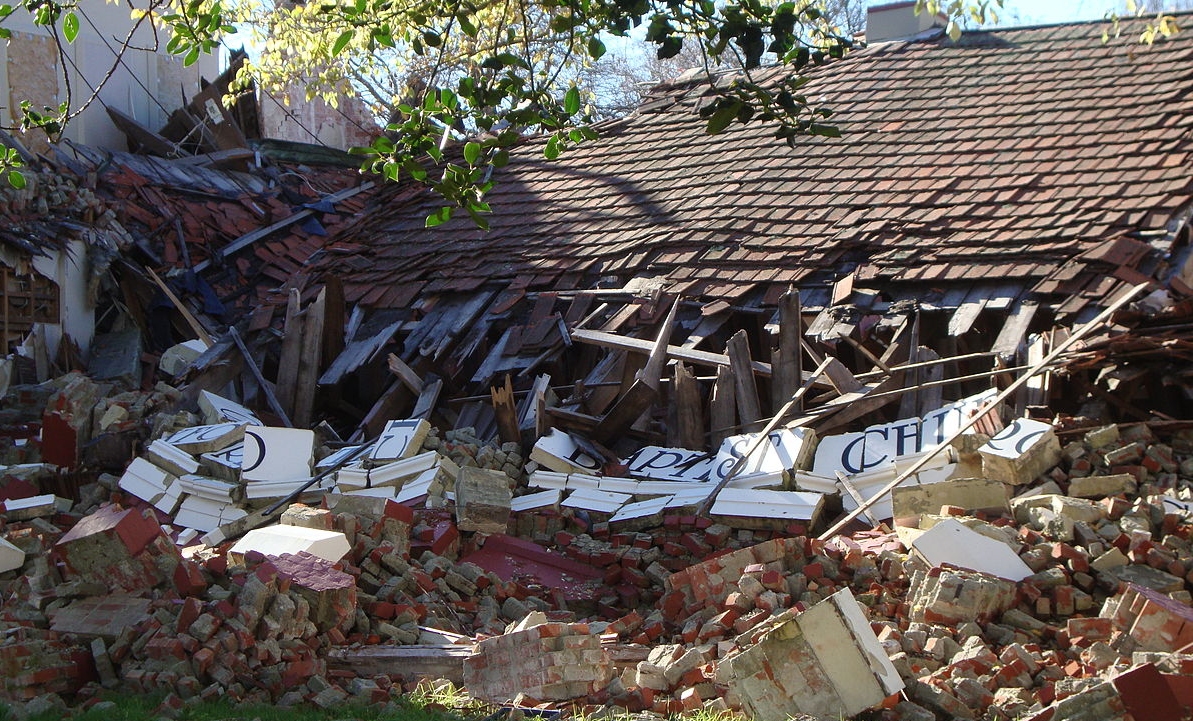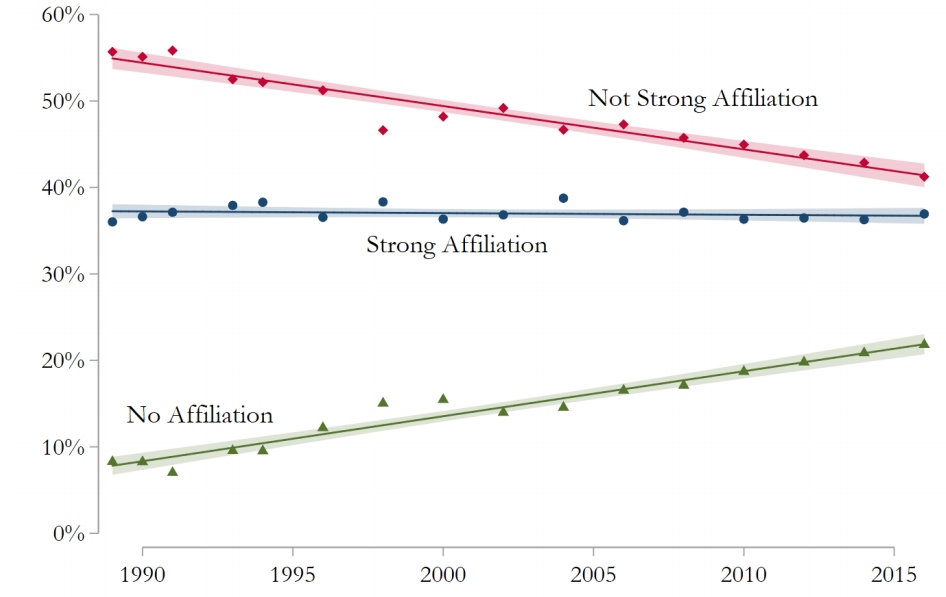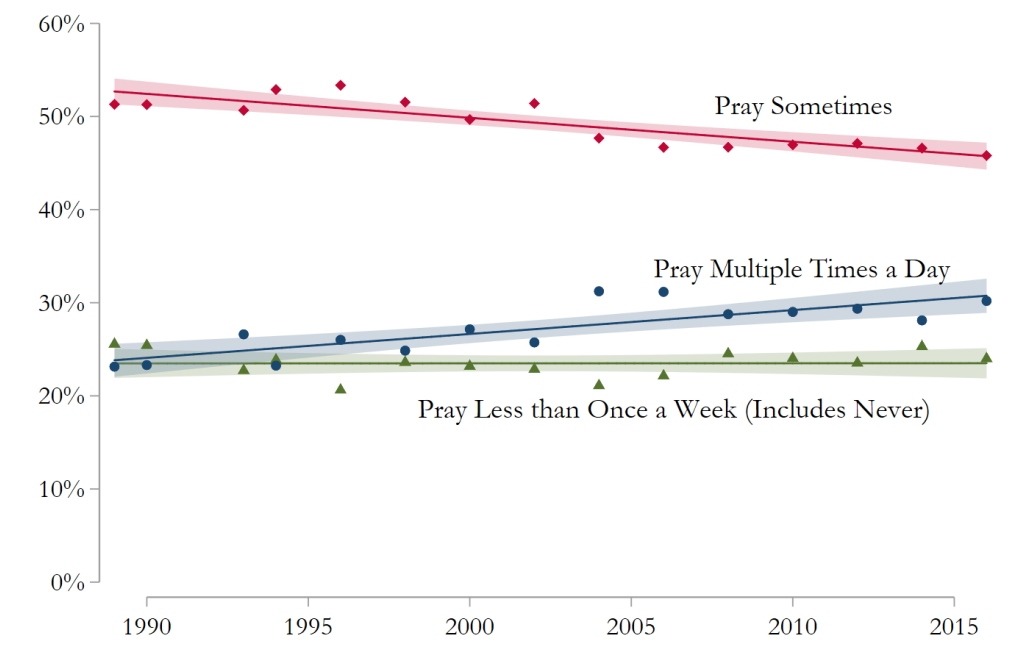
The secularization thesis holds that the advance of science and modernization leads to a decline in religion. As a result, the more scientifically and technologically advanced a society becomes, the less religious it becomes. One of the strong proponents of this view was Dr. Charles Wright Mills. In his book, The Sociological Imagination (Oxford University Press, 1959), he wrote:
Once the world was filled with the sacred – in thought, practice, and institutional form. After the Reformation and the Renaissance, the forces of modernization swept across the globe and secularization, a corollary historical process, loosened the dominance of the sacred. In due course, the sacred shall disappear altogether except, possibly, in the private realm. (pp. 32-33)
There are many people who believe this, and they think that Europe provides a great example of how it happens. There are huge, magnificent cathedrals in Europe, which are a testimony to how influential Christianity once was. Today, however, many of those cathedrals do not serve as houses of worship. Instead, they are museums of history. Even the ones that are still functioning as houses of worship have tiny congregations that are dwindling year by year.
Despite what happened across Europe, I have always been skeptical of the secularization thesis. Mostly, that’s because science convinced me that there must be a Creator God, which then led me to Christianity. The more I teach science and do scientific research, the more I see the Hand of God in nature. In my mind, advances in science and technology strongly support Christianity. As a result, the secularization thesis makes no sense to me.
I was recently made aware of an article from two years ago that argues against the secularization thesis in the United States. As I read it, I couldn’t help but think that it applies to the world as a whole.
The essential argument made in the paper is that casual religion is on the decline in the United States, but what they call “intense religion” (what I would call “real religion”) has not declined in any significant way. How do they make this argument? They draw on the results of the General Social Survey, which has been polling citizens of the United States on a variety of issues, including religion, since 1972. Using data going back to 1989 (a very common data set used in many other studies) they separate the people who they judge as “intensely” religious from those who they judge “moderately” religious. The results strongly support their argument.
Consider, for example, the simple question of whether or not someone has a religious affiliation. If the person answered “yes,” the follow-up question asked if the affiliation was “strong,” “somewhat strong,” or “not strong.” The authors grouped the “not strong” and “somewhat strong” respondents together and came up with this graph:

It’s rather easy to see what has happened when it comes to religious affiliation: Many of those who did not strongly affiliate with a religion simply “dropped out.” However, the percentage of Americans that are strongly affiliated with a religion has not changed significantly over this 28-year period.
The paper has several similar graphs, but I would like to share one more. The Survey asks how often the respondent prays. The options have changed a bit over this time period (for example, “never” was added in 2004), but grouping the respondents into one of three categories leads to these results:

It seems that the percentage of those who casually pray has declined over the years, but the percentage of those who frequently pray has increased.
I encourage you to read the complete report if you have the time and interest, but here is the authors’ conclusion:
We have demonstrated, however, that only moderate religion has declined and that the intensity of American religion is persistent and exceptional. The decline of moderate religion is not, therefore, a pervasive secularization consistent with the secularization thesis. Instead, it appears to be a reaction of moderates against religion that has become too intense, too strict, and too politicized in the face of social change.
I suspect that this conclusion can be applied to the world as a whole. In Europe’s past, for example, you couldn’t be a “respectable” member of society unless you were “religious.” As a result, there were a lot of casually religious people, and therefore religion had a heavy influence on society as a whole. However, as society changed, the social need for religion fell by the wayside, and most of the casually-religious people stopped being religious. This led to what looks like a general loss of religion in Europe, when in fact, it was not. Indeed, in some European countries, serious religion is on the rise.
Yes, science and modernization does reduce casual religion, but I think these authors have made the strong case that at least in the United States, it has not affected the percentage of those who take their religion seriously. I would say that this is probably the case in many other countries as well.

This is interesting. I think the secularization thesis would be better stated – “That the consolidation of science / institutions into secular hands leads to a decline in Judeo Chrsitian religion amongst young people.”
At least here in America you’ll find that many of those who walk away from Judeo Christian religion do so whilst walking towards some form of esoteric spirituality (usually some form of New Age / Pantheistic belief.)
If the secularization thesis contends that religion is a passing form of superstition then I’d suggest it biased to neglect the multitudes who put stock into these other forms of “superstition”. I’d imagine if you expanded the poll to include people who believed in karma, reincarnation, greater conciousness, tarot cards, gaia, acsension, divination, etc., etc., then you’d find that modern science has done little to relinquish “superstitions”.
Looking on the bright side, I know that the work that people like yourself, the Creation Institute, Answers in Genesis, etc. are doing is so important. As Christians we can’t allow secular institutions to be the only voices in academia.
I recently read “The Myth of the Dying Church” by Glenn Stanton. Fresh off the presses with lots of interesting sociological data (though the prose was trying at times). The loss of nominal Christianity was one of the major trends he highlights, so it’s not just this study that would support your conclusion.
As it is, Europe is slowly regaining some ground. According to the Secular Humanist Society, 14% of atheists believe in God. But, where atheism secularized Europe and is working on the rest of the world, Islam is gaining, and in some nations, gaining faster than they’re losing Africa. Asia is losing atheism to Christ but also to Islam. Nations in Africa are outlawing the building of mosques, stating all they are is places to store weapons. Africa, according to al-Jazeera, went from 50% Muslim to less than 20% today, and still falling. Some people are now atheists, but the majority have become Christians. While God seems to have abandoned Europe and the West, He’s working strong in every other place. Along with that, the average IQ is rising as Christians obey God’s law about education. And, people are wary of allowing a S. Africa education system into the land. walk in His beauty niio